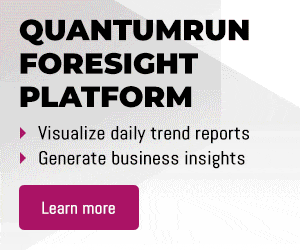Cellular vehicle-to-everything: Car conversations
Cellular vehicle-to-everything: Car conversations
Cellular vehicle-to-everything: Car conversations
- Author:
- April 11, 2025
Insight summary
Vehicles are becoming smarter and more connected through Cellular Vehicle-to-Everything (C-V2X) technology, enabling them to communicate with each other, road infrastructure, and even pedestrians to improve safety and traffic flow. This trend promises fewer accidents and shorter commutes, but it also raises concerns about data privacy as vehicles constantly share real-time information. As governments, businesses, and cities adapt to this shift, they face the challenge of balancing safety, efficiency, and security.
Cellular vehicle-to-everything context
Cellular Vehicle-to-Everything enables vehicles to interact seamlessly with each other, transportation infrastructure, pedestrians, and broader network systems. Built on the foundation of cellular networks, C-V2X facilitates real-time, high-speed data exchanges, enhancing road safety, traffic efficiency, and paving the way for autonomous driving. Unlike older technologies like Dedicated Short Range Communications, which rely on Wi-Fi-like connectivity, C-V2X leverages both direct short-range communication and broader network-based links. This dual-interface system allows vehicles to "see" beyond their immediate line of sight, enabling applications such as collision avoidance and traffic optimization. The technology has been standardized by the 3rd Generation Partnership Project, the same organization responsible for 3G, 4G/LTE, and 5G standards, ensuring wide compatibility and global reach.
The potential impact of C-V2X on road safety is significant, especially given that over 90 percent of traffic accidents in the US involve human error, according to the Department of Transportation. By enabling vehicles to share data about their speed, location, and driving intentions, C-V2X supports critical safety applications like lane-keeping assistance and pedestrian alerts. For example, a car approaching an intersection could receive real-time information about an unseen cyclist or a pedestrian crossing, allowing the driver or autonomous system to take preventive action. Moreover, the role of C-V2X extends beyond individual vehicles to smart city infrastructure. Traffic lights, road signs, and toll booths equipped with C-V2X can dynamically communicate with vehicles, optimizing traffic flow, reducing congestion, and lowering emissions — key priorities in developing smart cities.
In November 2024, the Federal Communications Commission finalized new spectrum rules, allocating 30 megahertz of the 5.9 GHz band specifically for Intelligent Transportation Systems, including C-V2X. This regulatory move ensures that C-V2X can operate with minimal interference, supporting reliable and secure communications for safety-critical applications. Industry players, such as Ford, are actively integrating C-V2X into their vehicles, aiming to create cars that can warn drivers about hazards like approaching cyclists or sudden traffic congestion. The 5G Automotive Association, a consortium of over 130 companies, is also pushing the adoption of 5G-based C-V2X, enhancing data speed, reducing latency, and ensuring robust connectivity.
Disruptive impact
With vehicles capable of communicating directly with each other and road infrastructure, drivers may experience safer journeys with fewer accidents and traffic delays. Real-time alerts about road hazards, sudden stops, or pedestrians crossing can enhance overall driving safety. Additionally, C-V2X could support smoother traffic flows, reducing travel times and fuel consumption, which could lower commuting costs. However, there are privacy concerns, as constant data sharing between vehicles and networks could expose personal driving patterns and locations, raising questions about data protection and misuse.
Automakers may need to redesign vehicles to include advanced communication systems, integrating them with sensors, antennas, and software to support C-V2X functions. Logistics companies could optimize fleet operations through vehicle platooning, where trucks travel closely together to save fuel and reduce emissions, potentially cutting operational costs. Additionally, tech companies might see demand for software solutions that manage the massive data exchanges between vehicles and networks. However, businesses may face higher costs in adapting to evolving standards and ensuring the cybersecurity of C-V2X systems, as data breaches could disrupt services and damage brand reputations.
Upgrading roads, traffic signals, and signs to support vehicle-to-infrastructure communication will require significant public funding. Policies around data privacy and cybersecurity will also need to be strengthened to protect individuals and businesses as vehicle data becomes a critical asset. Governments might introduce incentives to accelerate C-V2X adoption, such as tax breaks for manufacturers or funding for smart city projects. Additionally, transportation departments may rely on real-time traffic data from C-V2X systems to better manage traffic flows and reduce congestion. However, unequal infrastructure upgrades between urban and rural areas could widen the accessibility gap, potentially leaving some regions without the benefits of safer, smarter transportation networks.
Implications of cellular vehicle-to-everything
Wider implications of C-V2X may include:
- Cities adopting C-V2X-integrated traffic systems to reduce congestion, leading to shorter commute times and lower vehicle emissions.
- Insurance companies adjusting policies based on real-time driving data, resulting in usage-based pricing models that reward safer driving.
- Governments introducing stricter cybersecurity regulations for connected vehicles, ensuring better protection against hacking and data breaches.
- Auto manufacturers shifting focus to connected vehicle production, driving demand for specialized labor and new workforce training programs.
- Rural areas facing slower C-V2X infrastructure development, widening the gap in road safety and smart mobility access compared to urban centers.
- Increased data sharing between vehicles and city infrastructure creating new business opportunities in real-time data analytics and traffic management.
- Pedestrian safety improving with C-V2X-equipped crosswalks alerting nearby vehicles, leading to fewer accidents in densely populated areas.
- Public transportation systems integrating C-V2X for dynamic routing and real-time updates, resulting in more reliable and efficient services.
- Governments using C-V2X data to inform urban planning decisions, leading to smarter infrastructure investments and more sustainable city growth.
Questions to consider
- How could C-V2X technology change how you commute and interact with your city’s transportation systems?
- How might connected vehicles impact your personal data privacy and security?
Insight references
The following popular and institutional links were referenced for this insight:



